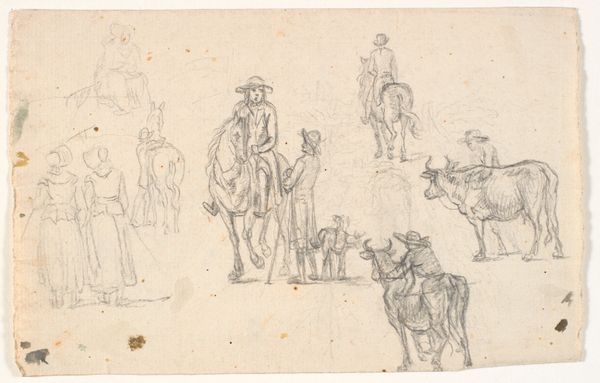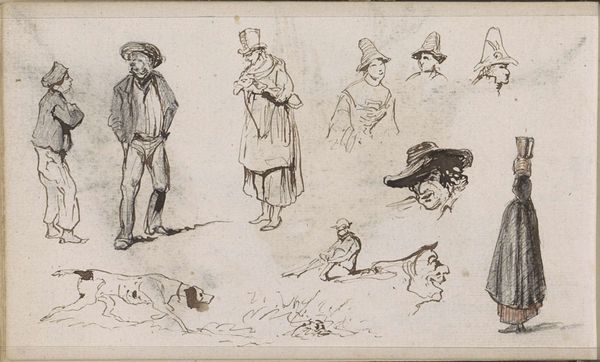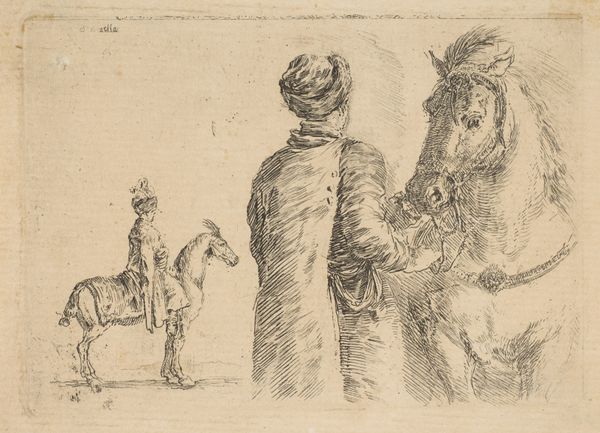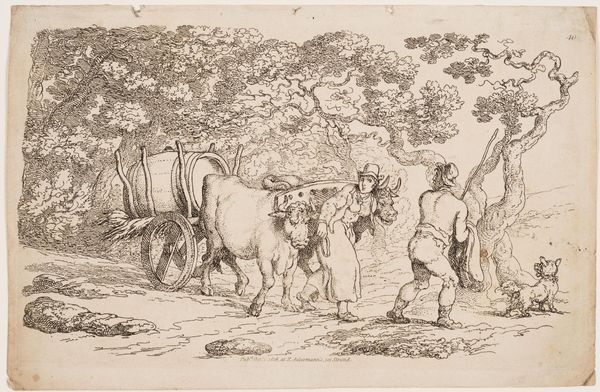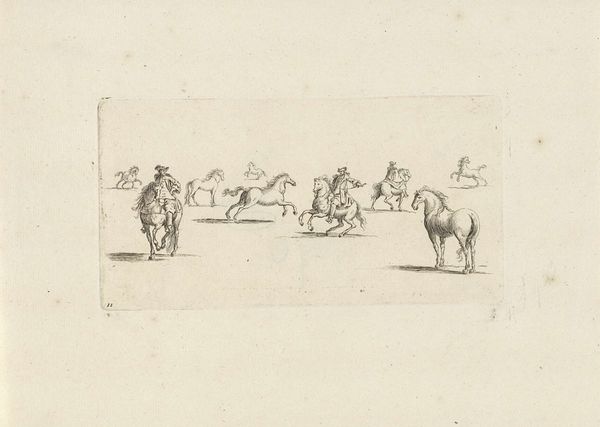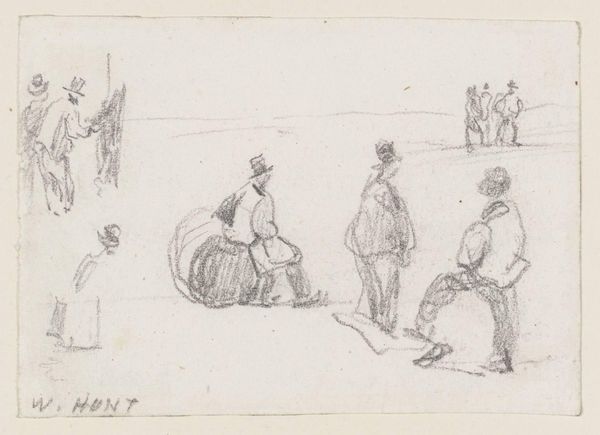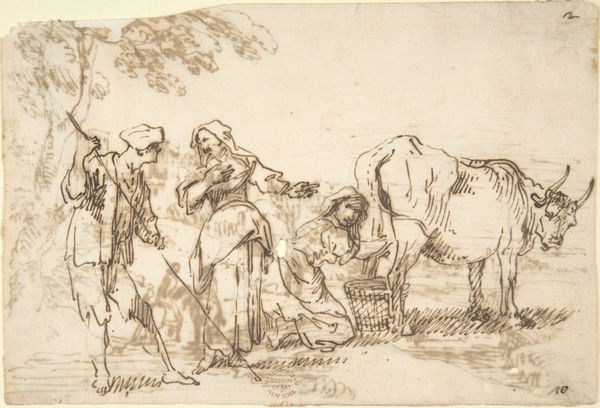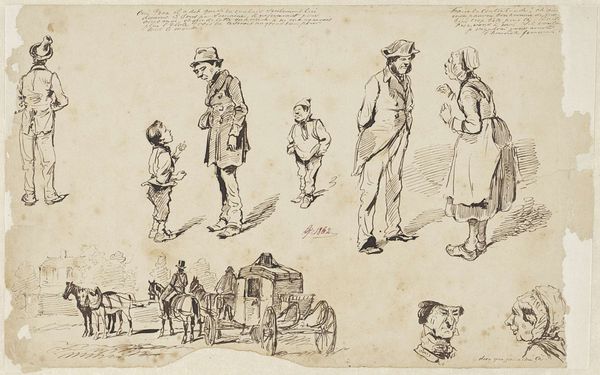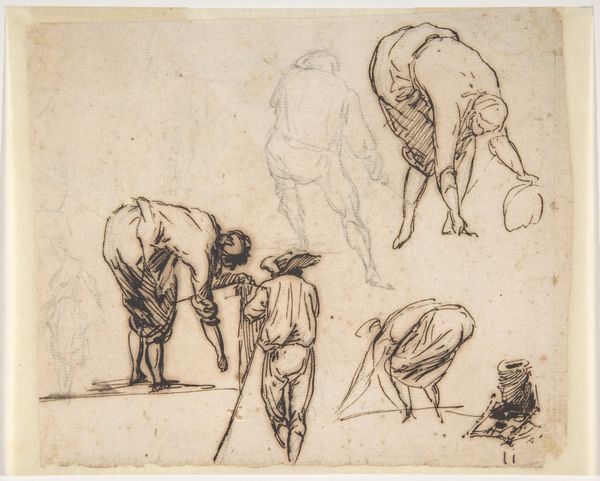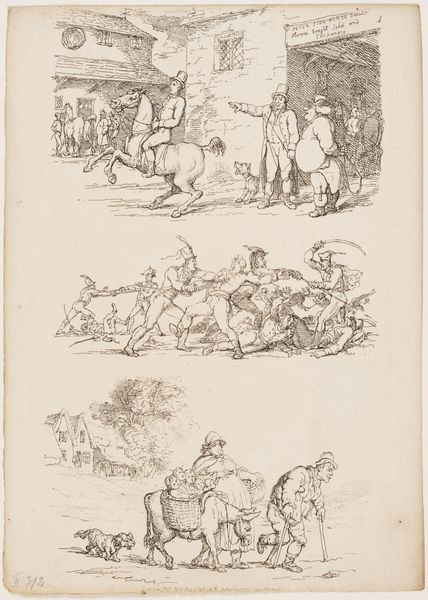
drawing, paper, ink
#
drawing
#
caricature
#
landscape
#
figuration
#
paper
#
ink
#
genre-painting
#
realism
Dimensions: height 213 mm, width 343 mm
Copyright: Rijks Museum: Open Domain
Curator: Pieter van Loon's "Caricatural Figure Scenes and a Horse and Cart," dating to 1862, is an ink drawing on paper, currently held at the Rijksmuseum. Its busy composition immediately draws the eye. What stands out to you initially? Editor: There's a strong sense of street life depicted here, but the caricature gives it a satirical edge. It feels very grounded, like looking at scenes of ordinary existence observed with a critical eye. Curator: Absolutely, van Loon was clearly influenced by the Realist movement, yet the satirical bent sets him apart. The placement of these caricatured figures in various vignettes also implies an interesting perspective on class and labor during this period. The figures almost serve as ethnographic records of ordinary Dutch life in the mid-19th century. Editor: I agree, although these vignettes read like something else, too: critiques. Take, for instance, the working people rendered in great detail while the obviously wealthy man traveling by carriage is only gestured at, as a silhouette of status rather than of presence. Are we seeing the politics of labor manifesting themselves formally? Curator: Certainly the level of detail calls our attention, doesn’t it? Van Loon presents not just people but types – archetypes shaped by labor and economic status. And there’s a performative aspect to how these types interact; they're characters on the social stage. That feels tied into the artifice implied by the caricatures themselves, as if these social roles are just as artificial as the artist's exaggerations. Editor: The ink work, combined with the medium of paper, offers a fascinating immediacy that gives the overall work a rawness that really suits its message. Van Loon uses line and negative space quite effectively, lending a lightness to what is actually a fairly sharp social commentary. Do you agree? Curator: It does highlight the inherent contradictions in representing everyday life: realism strives for accuracy, but caricature exposes the constructedness of social roles. The work feels surprisingly radical for its time. Editor: Considering that this piece offers an implicit narrative concerning visibility, class, and performativity, one might observe in "Caricatural Figure Scenes…" not just sketches, but the foundation for resistance and advocacy. It's powerful to imagine how people can reclaim their images to fight injustice. Curator: It leaves you pondering the role of observation in society doesn’t it? This has certainly given me food for thought. Editor: For me too; and the importance of perspective. Thanks.
Comments
No comments
Be the first to comment and join the conversation on the ultimate creative platform.

